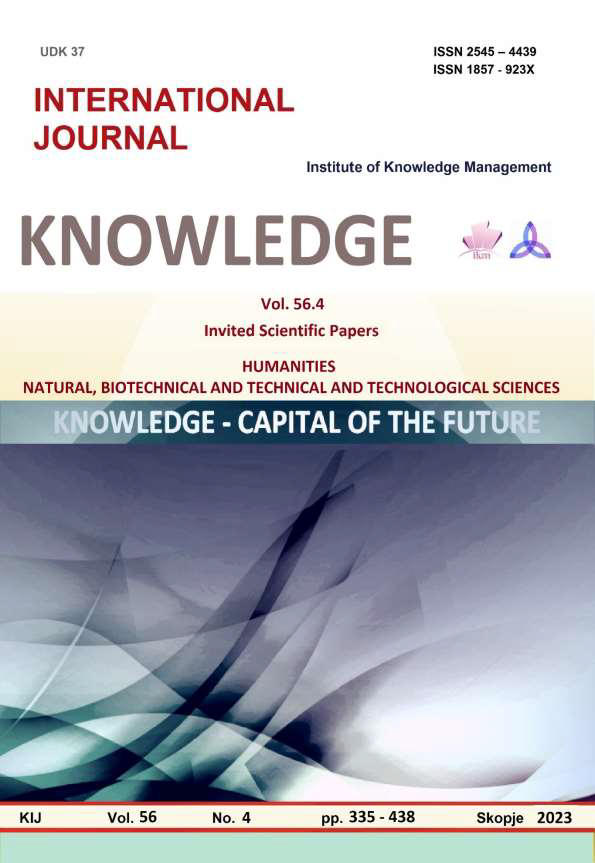LINGUISTIC INTERPRETATION OF FAIRY TALES IN PRESCHOOLERS
Keywords:
fairy tale, preschooler, implicit reader, interpretation, phychoanalysisAbstract
The introductory part of the paper will talk about fairy tales as a literary genre, its place in children's literature, the development of fairy tales through history and psychoanalytic theories of fairy tales. Furthermore, the importance and role of fairy tales in the child's life, its influence on the general development of the child, as well as the therapeutic effect of fairy tales on the child will be presented. Many parents are confused about whether or not they should read fairy tales to their children, which can often seem scary and hardly applicable to them. Psychologists, on the other hand, claim that nowadays, perhaps more than ever before, we need to read fairy tales to children. Many authors express, and emphasize that children are actually
exposed to violence and cruelty every day through the media, and not through fairy tales .. Children identify with the characters in the fairy tale, so the child feels great satisfaction when the character from the fairy tale manages to defeat opponents much bigger and stronger than them. A fairy tale is a literary genre that children encounter very early in their childhood, whether it is an oral or an authorial tale. Through a fairy tale, children get to learn about the world and the people around them. Their unique relationships with the story have a special emphasis on the moral message that the fairy tale carries. In the empirical part of the paper, the questionnaires will explore the importance of fairy tales in parents and educators, parents’ and educators’ attitudes regarding the suitability and importance of fairy tales for the child, the expectations children establish from fairy tales, about reading in the future, and who interprets or tells the tales. The purpose of the research is to present and analyze the results of a survey (questionnaire) on the influence of a fairy tale on a preschool child.
References
Biti, V. (1981). Përralla dhe tradita, historia dhe tregimi. Zagrebi.: Shtypi i Universitetit Liber.
Biti, V. (1981). Përralla dhe tradita, historia dhe tregimi. Zagrebi: Shtypi i Universitetit Liber.
Biti, V. (1981). Përralla dhe tradita, historia dhe tregimi. Zagrebi: Shtypi i Universitetit Liber.
Bošković-Stulli, M. N. ( 1963.). Narodne pripovijetke. U Pet stoljeća hrvatske književnosti. . Zagreb: Zora. Matica hrvatska. Zagreb. .
Charles Perrault, Vëllezërit Grim. (2018 (ribotim),). Kësulëkuqja. Tirana: Adrion ltd. doi:ISBN 9789928128423
Crnković, M. (1984). Dječja književnost. Priručnik za studente i nastavnike. Zagreb: Školska knjiga.
Demiri, E. (2020, Maj 11). Gjuhe shqipe 5. Kundrinori i drejte. Retrieved from https://www.youtube.com/watch?v=a8MSTq4I7jc&t=105s&ab_channel=EmiljanaDemiri
Golem, D. (2006). Mali rječnik književnoteorijskih pojmova. Zagreb: Profil, Zagreb.
Grimm, V. (2018). Perralla ne 3 minuta nga vellezerit Grimm. Tirana: Bota Shqiptare. doi:ISBN 9789928002938
Grimm, V. (2019). Borëbardha. Tirana: Ideart. doi:ISBN 9789928128409
Kolodi, K. (2018 (ribotiim i 2008)). Pinoku. Tirana: Bota Shqiptare. doi:ISBN: 978-99956-11-46-0
Larkin, R. (2020). Hirushja. Tirana: Aeditions. doi:ISBN 978 9928 177 57 5
Pero, S. (2020). Maçoku me çizme. Tirana: Albas.
Propp, V. (1982). Morfologjia e përrallës. “Pika pa sipërfaqe”. Tiranë.
Solar, M. (2005). Teoria e Letërsisë. . Zagrebi: Libër shkollor.
ujku, K. d. (2018, gusht 16). https://perrallashqip.org/2018/08/16/mama-dhia-7-kecat-dhe-ujku/. Retrieved from https://perrallashqip.org/2018/08/16/mama-dhia-7-kecat-dhe-ujku/
Visinko, K. Z. (2009). Dječja priča – povijest, teorija, recepcija i interpretacija. Zagreb: Školska knjiga, Zagreb





